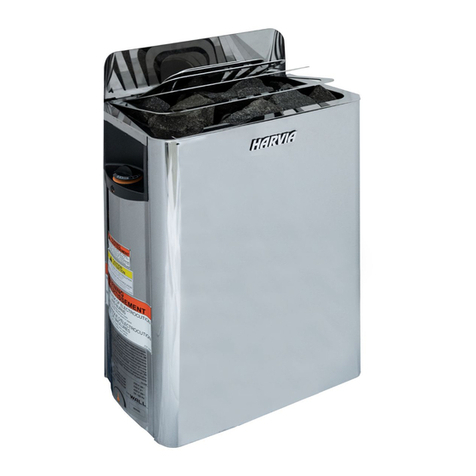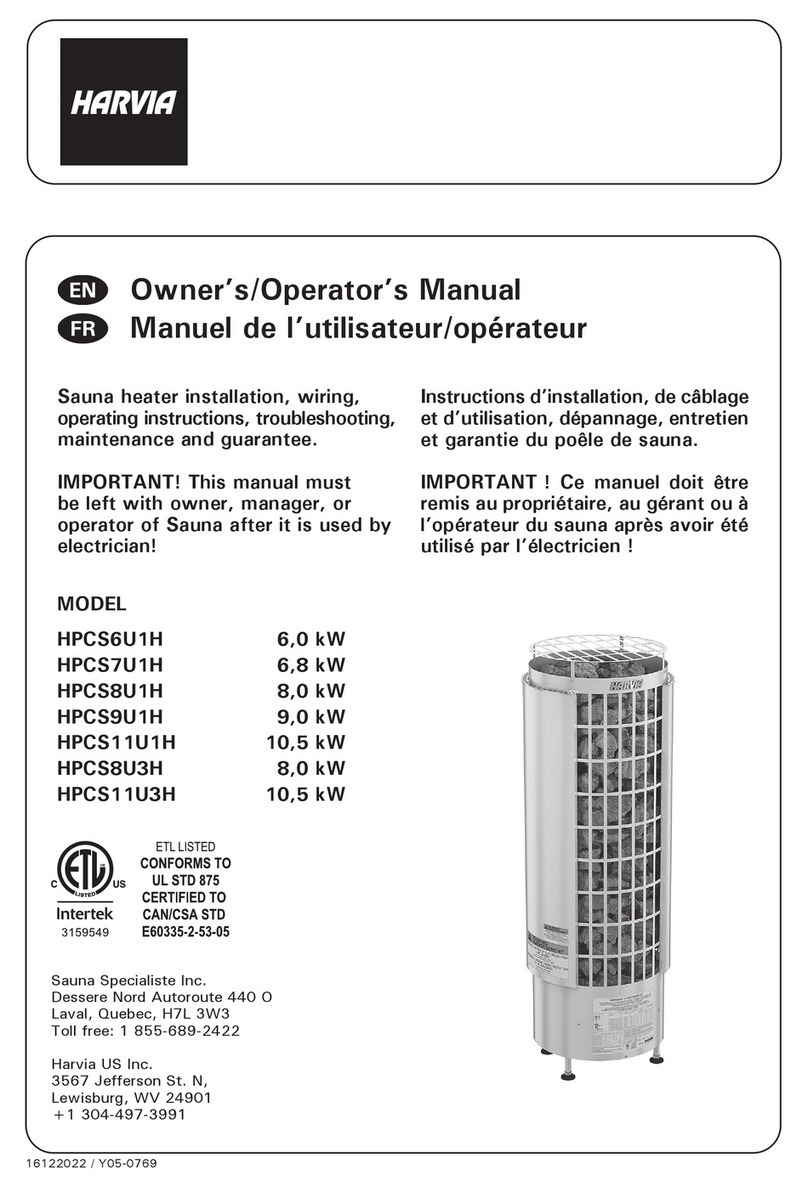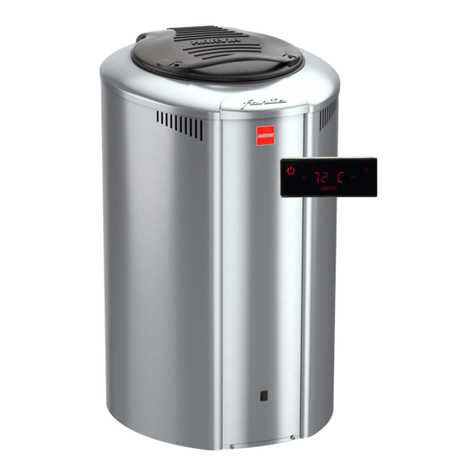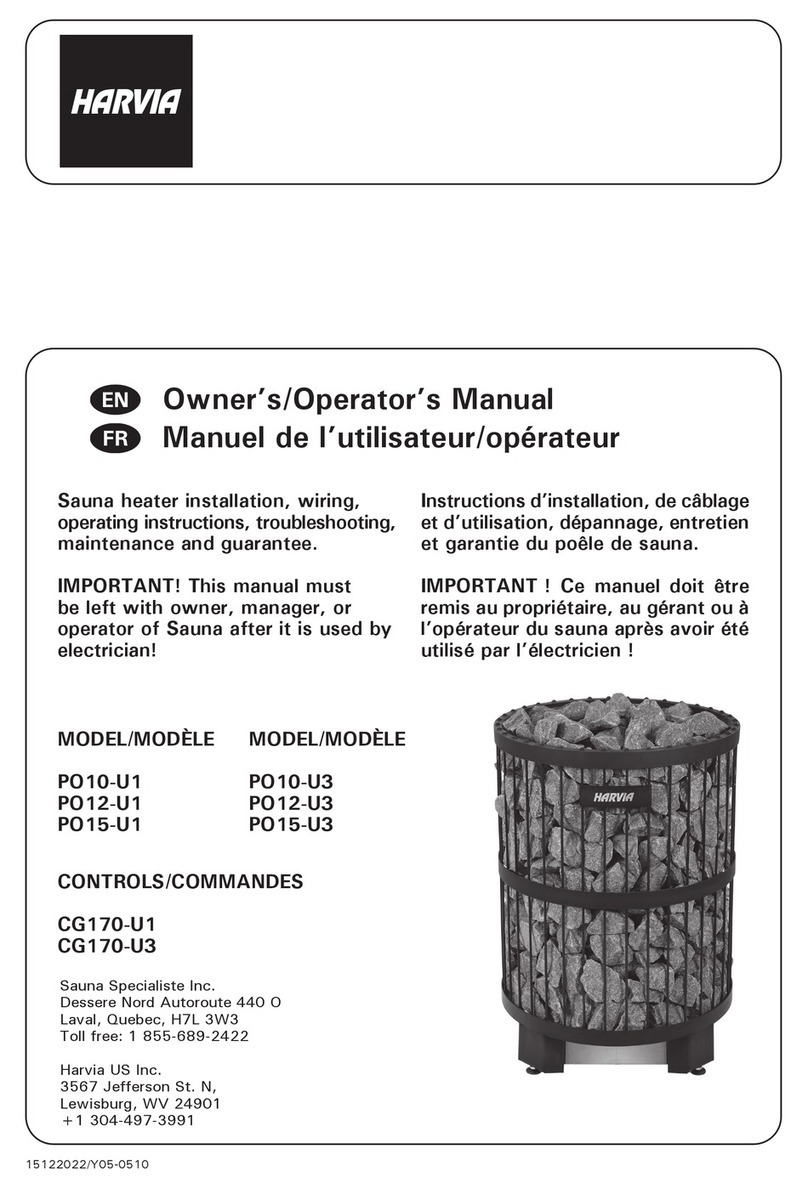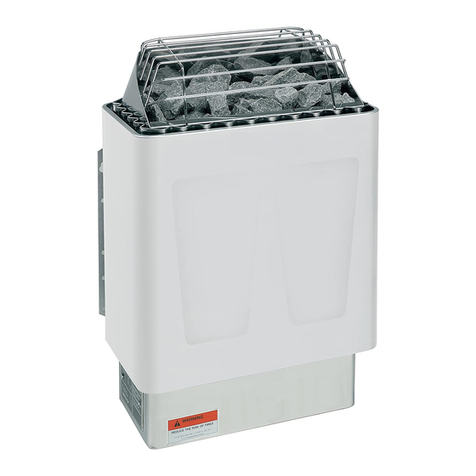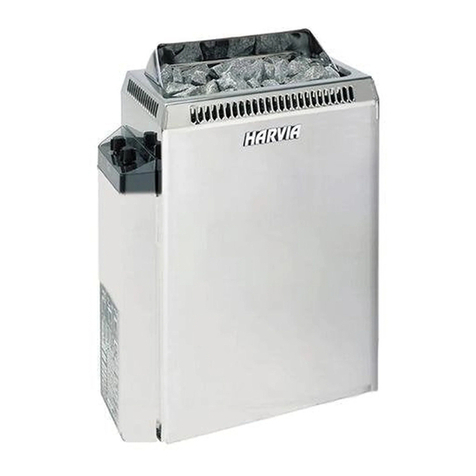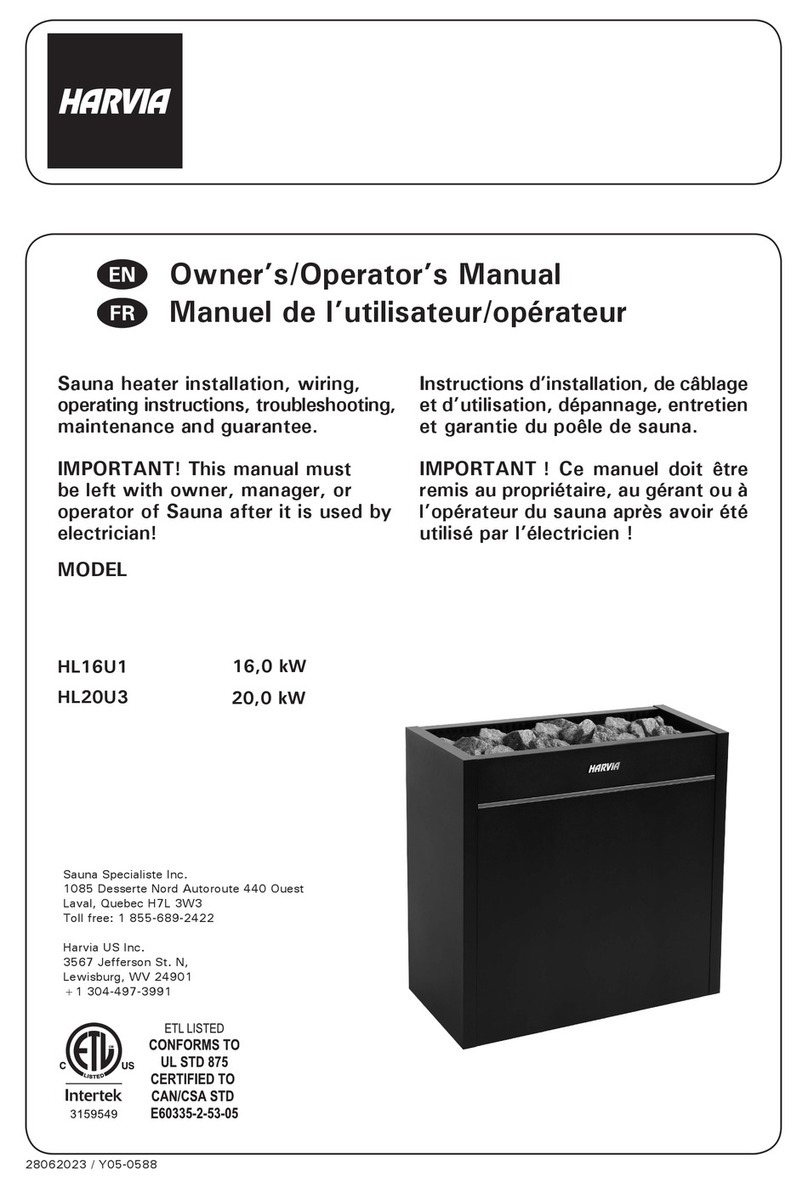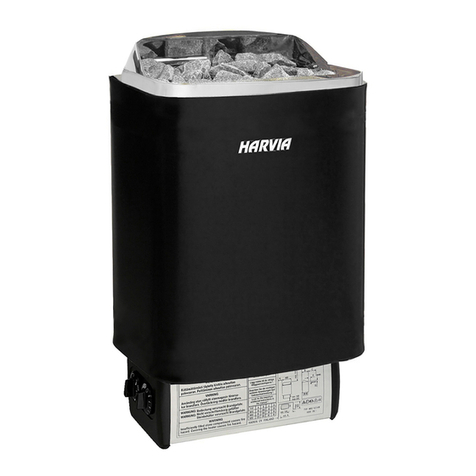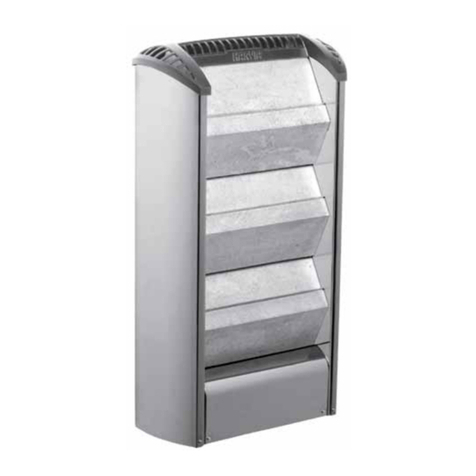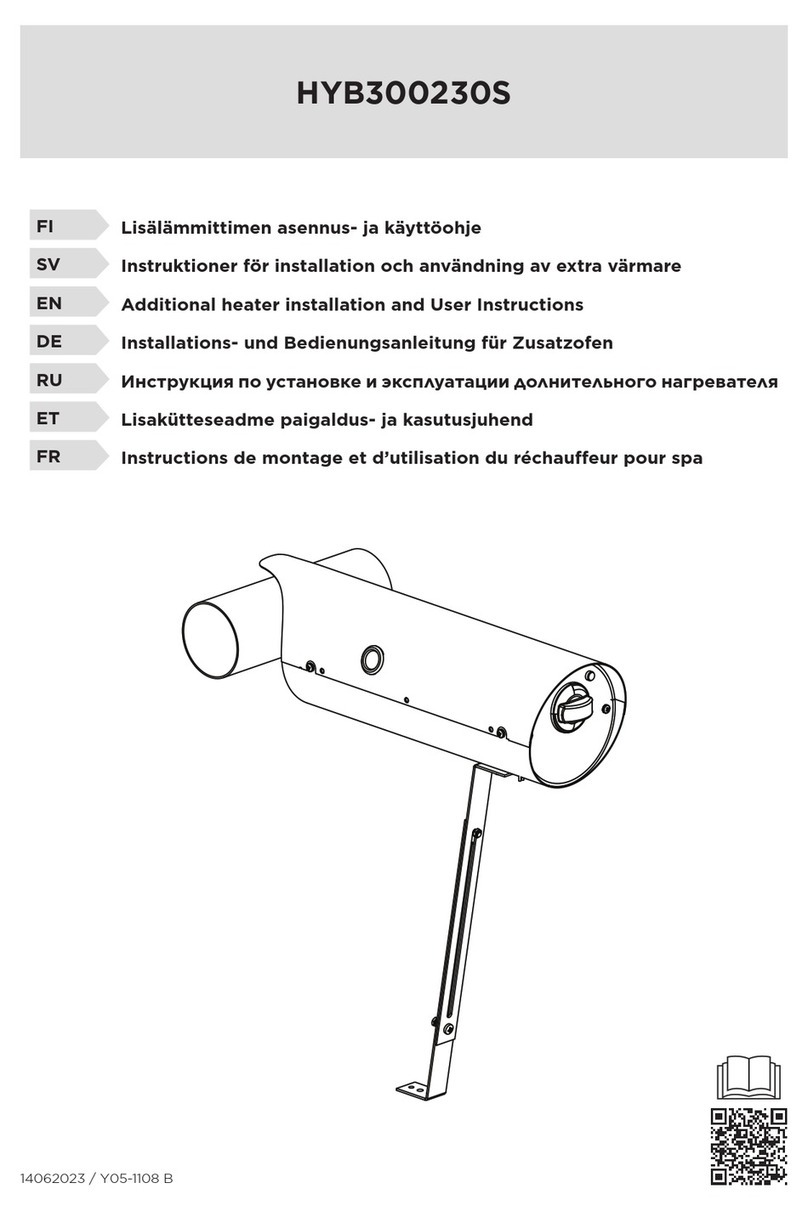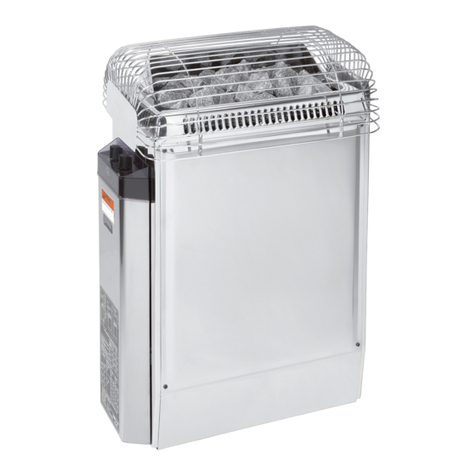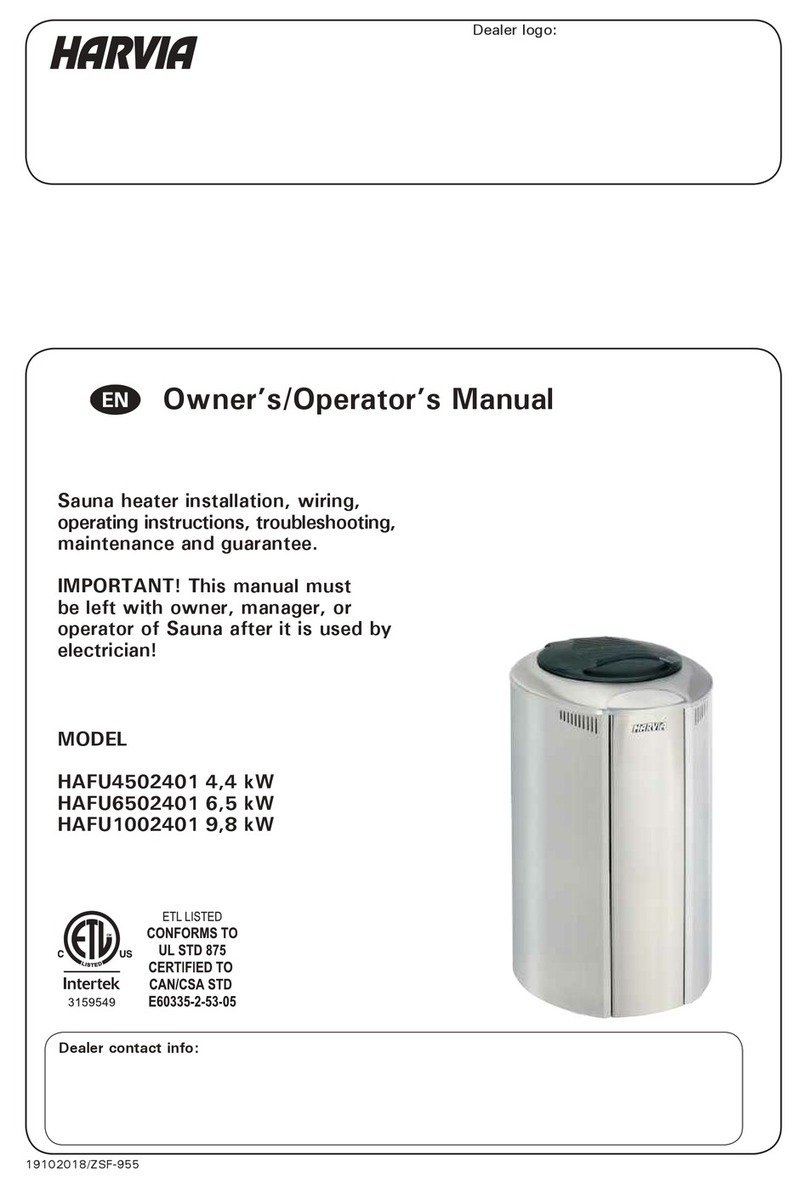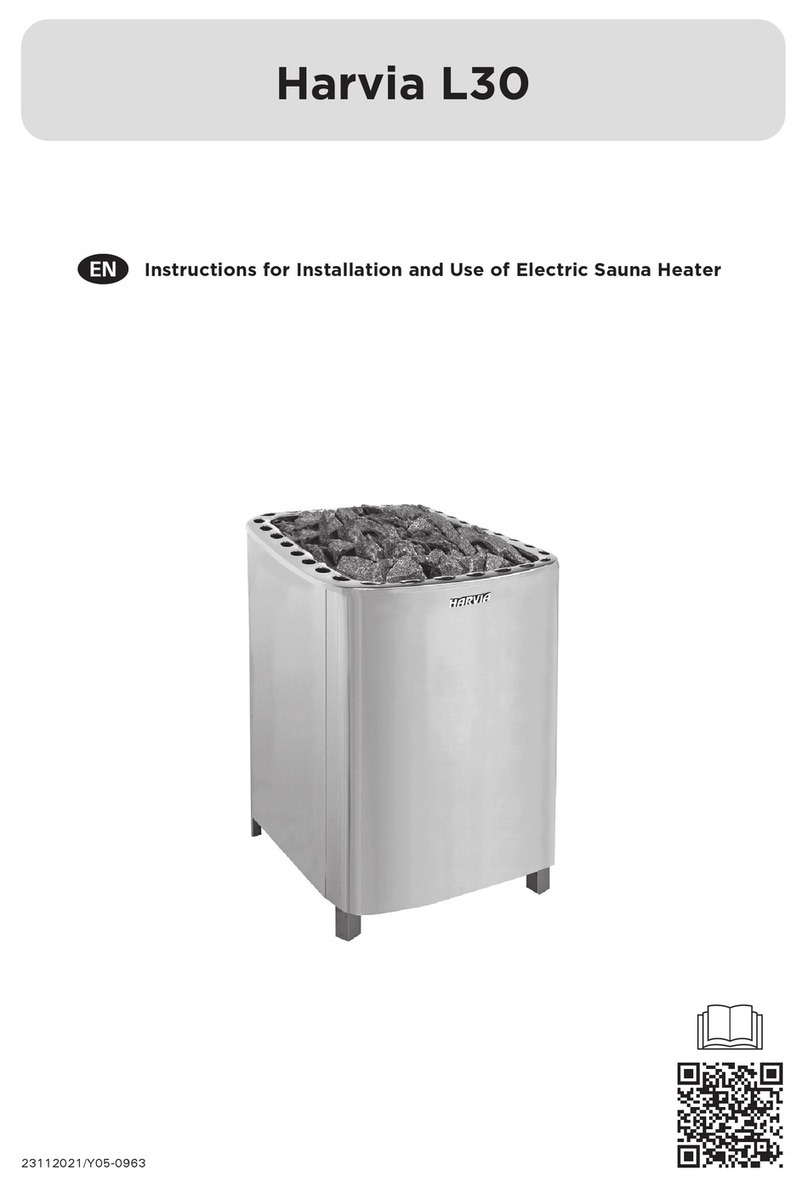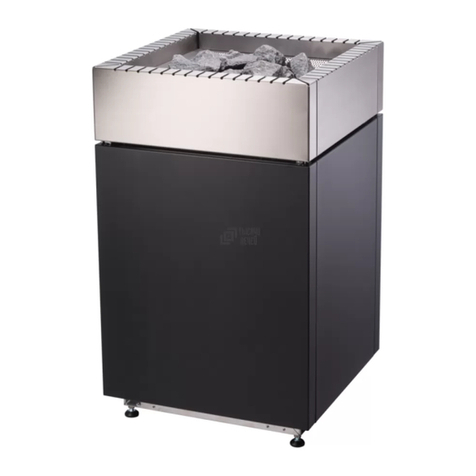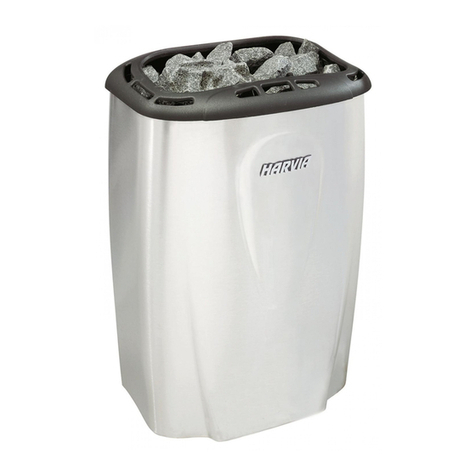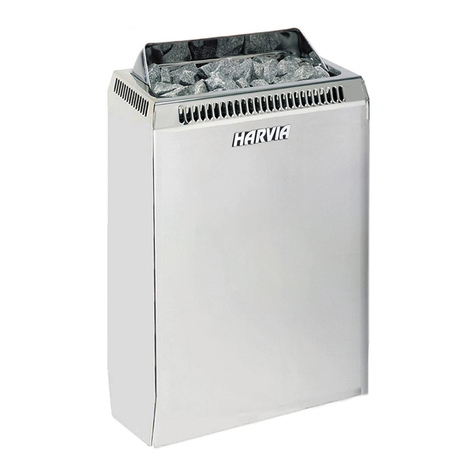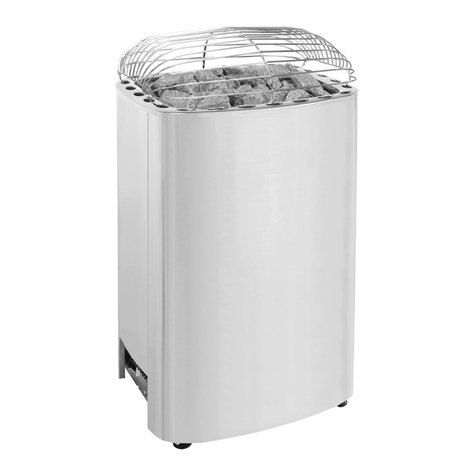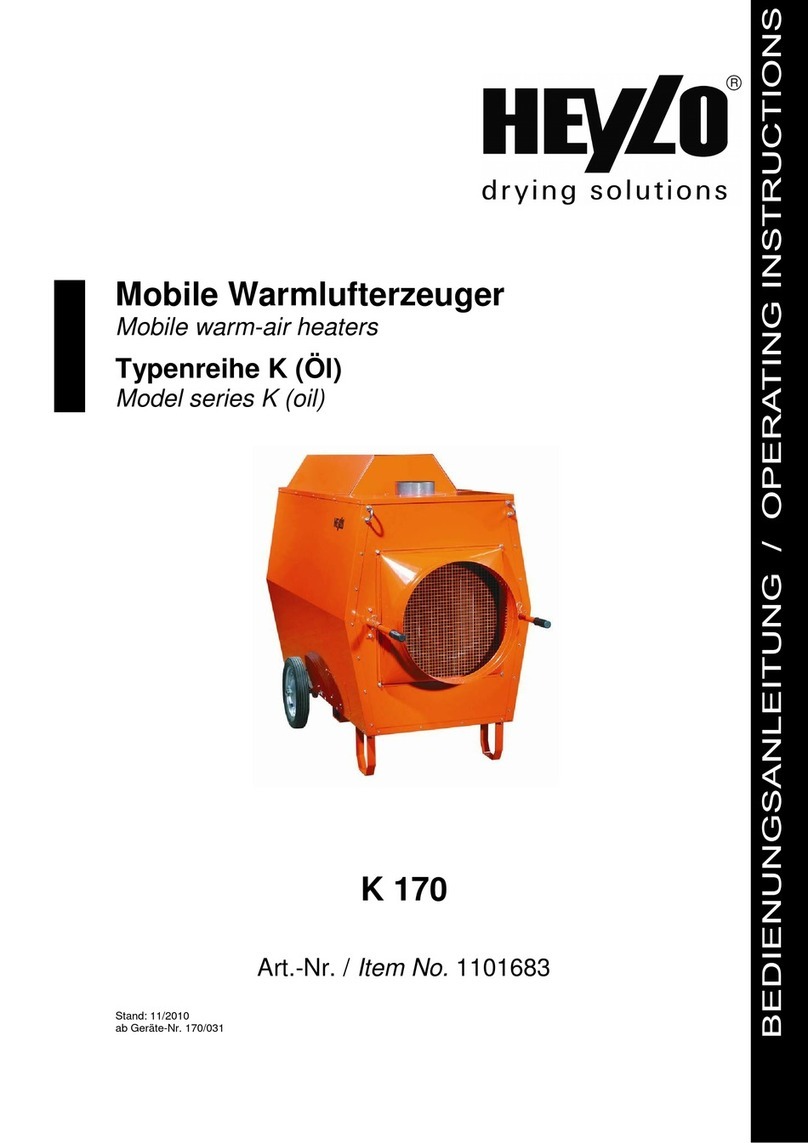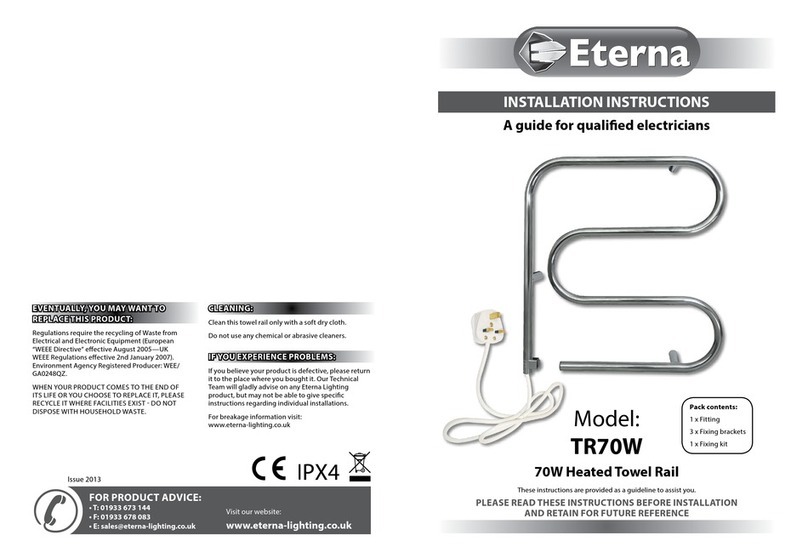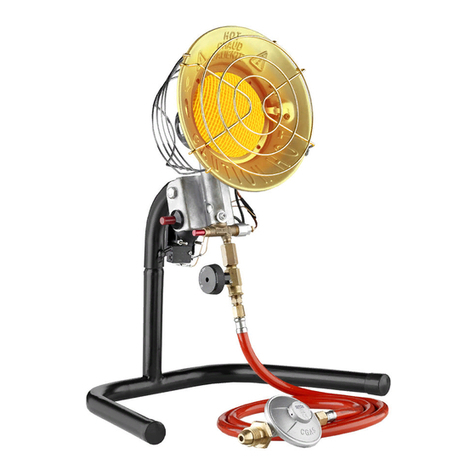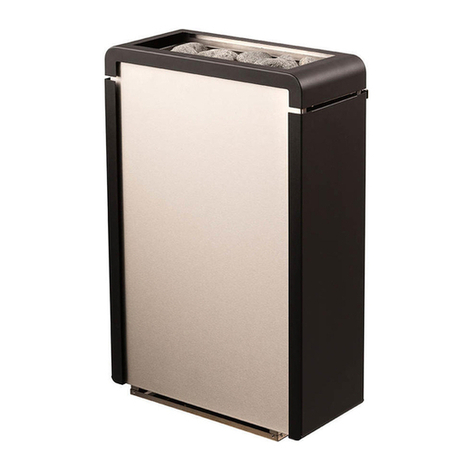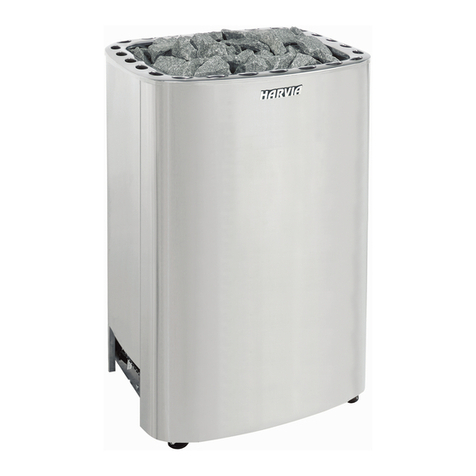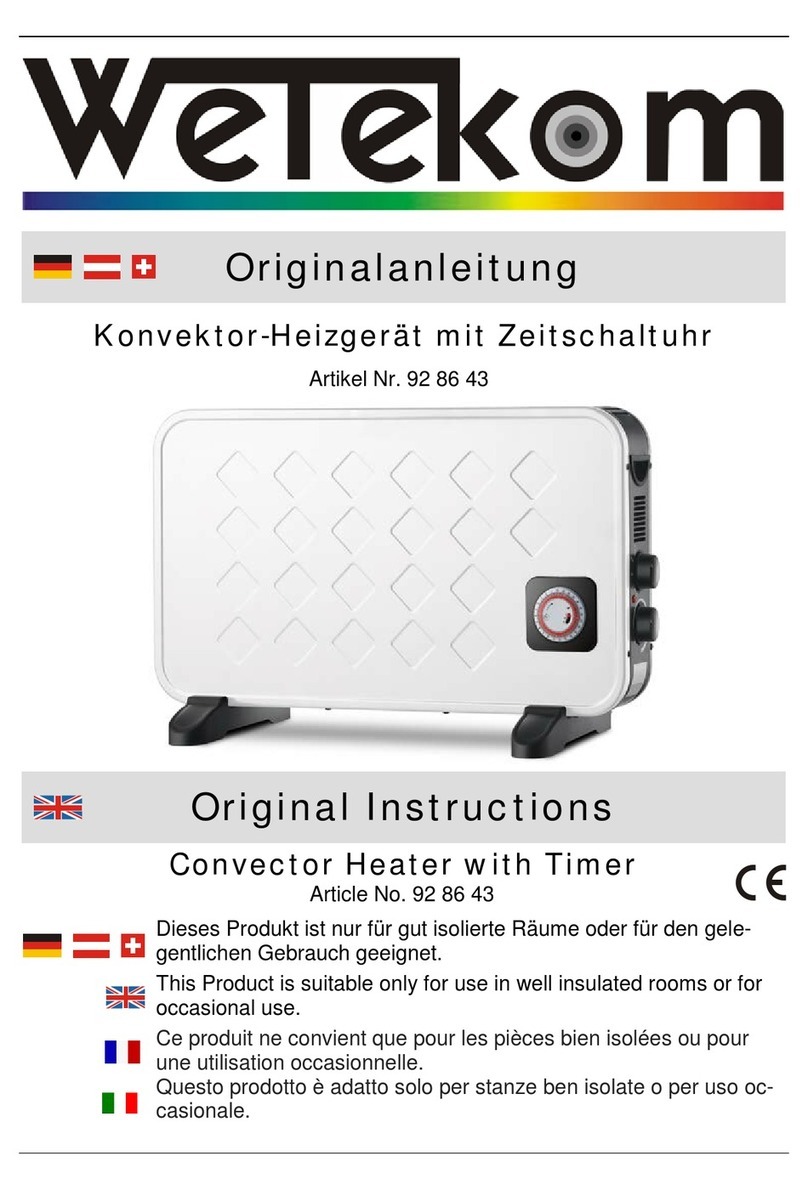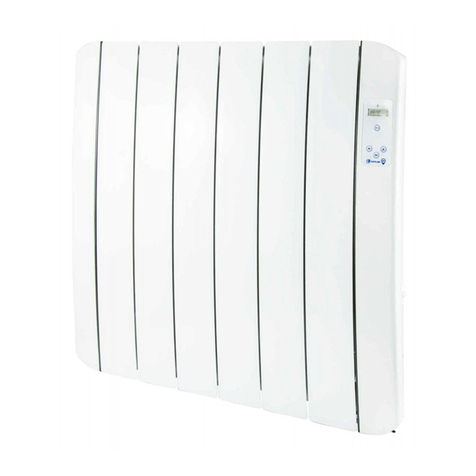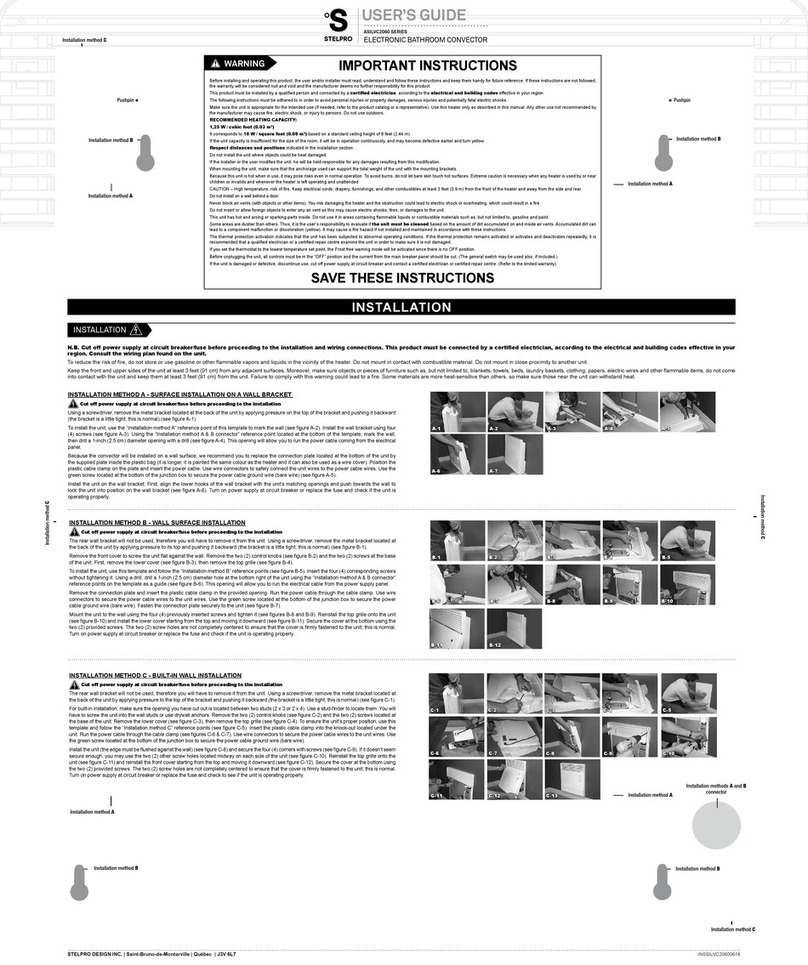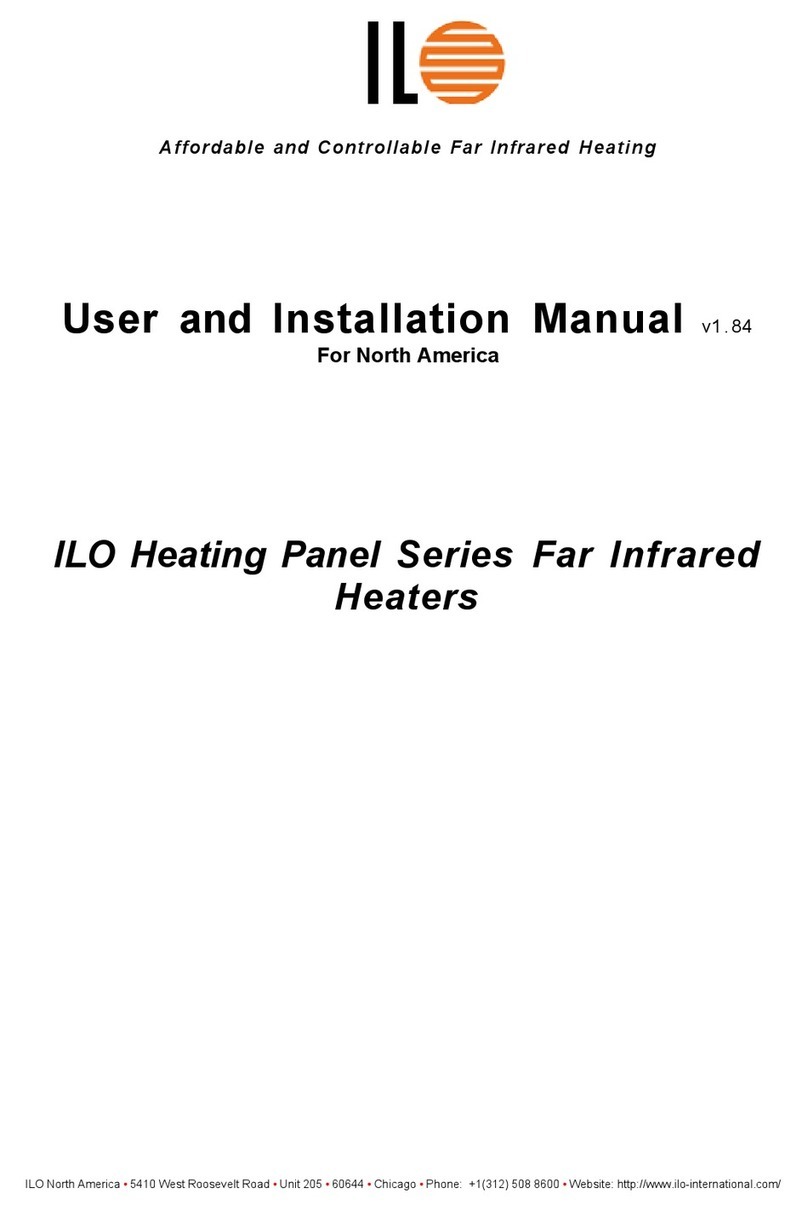3
1. INSTRUCTIONS FOR USE
1.1. Piling of the Sauna Stones
The sauna stones for an electric heater should be
4–8 cm in diameter. The heater stones should be
solid blocks of stone specially intended for use in the
heater. Neither light, porous ceramic “stones“ of the
same size nor soft potstones should be used in the
heater, because they may cause the resistance
temperature to rise too high as a result of which the
resistance may be broken.
Stone dust should be washed off before piling the
stones. The stones should be piled into the stone
compartment over the grating, between the heating
elements (resistances) so that the stones support
each other. The weight of the stones should not lie
on the heating elements.
The stones should not be piled too tightly, so that
air can flow through the heater. The stones should
be fitted loosely, and not wedged between the
heating elements. Very small stones should not be
put into the heater at all.
The stones should completely
cover the heating elements.
However, they should not form a
high pile on the elements. See
fig. 1.
The stones disintegrate with
use. Therefore, they should be
rearranged at least once a year or
even more often if the sauna is in
frequent use. At the same time,
any pieces of stones should be
removed from the bottom of the
heater, and disintegrated stones
should be replaced with new
ones.
The guarantee does not cover
any faults caused by the use of
stones not recommended by the
plant.Neitherdoes theguarantee
cover any faults caused by
disintegrated or too small stones blocking the heater
ventilation.
No such objects or devices should be placed inside
the heater stone space or near the heater that could
change the amount or direction of the air flowing
through the heater, thus causing the resistance
temperature to rise too high, which may set the wall
surfaces on fire!
1.2. Heating of the Sauna
When the heater is switched on for the first time, both
the heater and the stones emit smell. To remove the
smell,thesauna room needs to beefficientlyventilated.
Thepurposeoftheheateristoraisethetemperature
of the sauna room and the sauna stones to the
required bathing temperature. If the heater output is
suitable for the sauna room, it will take about an hour
for a properly insulated sauna to reach that
temperature. See item 2.1., ”Insulation an Wall
MaterialsoftheSaunaRoom”.Asuitabletemperature
for the sauna room is about + 65 °C – +80 °C.
1. ANLEITUNG FÜR DEN BENUTZER
1.1. Aufschichten der Saunaofensteine
Die passenden Steine für einen Elektrosaunaofen
haben einen Durchmesser von 4–8 cm. Als Sauna-
ofensteine sollten speziell für Saunaöfen gedachte,
bekannte, massive Bruchsteine verwendet werden.
Die Verwendung leichter, poröser und gleichgroßer
keramischer Steine ist verboten, da durch sie die
Widerständeüberhitztundbeschädigtwerdenkönnen.
Als Saunaofensteine dürfen auch keine weichen
Topfsteineverwendetwerden.
Die Steine sollten vor dem Aufschichten von
Steinstaubbefreitwerden.DieSteinewerdenaufden
Rost in den Saunaofen in die Zwischenräume der
Heizelemente so gesetzt, daß die Steine einander
tragen. Das Gewicht der Steine darf nicht von den
Heizelementengetragenwerden.
DieSteinedürfennichtzudichtgesetztwerden,damitdie
Luftzirkulationnichtbehindertwird.AuchdürfendieSteine
nichtengzwischendenHeizelementenverkeiltwerden,die
Steine sollten locker gesetzt
werden. Sehr kleine Steine sollen
nicht in den Saunaofen gelegt
werden.
DieSteinesollen die Heizelemente
vollständigbedecken,siedürfenaber
nicht hoch über den Saunaofen
herausragen.SieheAbb.1.
Während des Gebrauchs werden
dieSteinespröde.AusdiesemGrund
solltendieSteinemindestenseinmal
jährlichneuaufgeschichtetwerden,
bei starkem Gebrauch öfter. Bei
dieserGelegenheitentfernenSiebitte
auchStaubundGesteinssplitteraus
demunterenTeildesSaunaofensund
erneuernbeschädigteSteine.
Die Garantie kommt nicht für
Schäden auf, die durch
Verwendung anderer als vom
Werk empfohlener Saunaofen-
steine entstehen. Die Garantie kommt auch nicht für
SchädendesSaunaofensauf,diedurchVerstopfung
der Luftzirkulation durch bei Gebrauch spröde
gewordeneSteineoderzukleineSteineentstehen.
InderSteinkammeroderinderNähedesSaunaofens
dürfensichkeineGegenständeoderGerätebefinden,
die die Menge oder die Richtung des durch den
Saunaofen führenden Luftstroms ändern, und somit
eineÜberhitzungderWiderständesowieBrandgefahr
derWandflächenverursachen!
1.2. Erhitzen der Saunakabine
Beim ersten Erwärmen sondern sich von Saunaofen
undSteinenGerücheab.Umdiesezuentfernen,muß
dieSaunakabinegründlichgelüftetwerden.
DieFunktiondesSaunaofensistes,dieSaunakabineunddie
OfensteineaufdieAufgußtemperaturzubringen.Wenndie
Leistung des Saunaofens an die Größe der Saunakabine
angepaßtist,erwärmtsicheinegutwärmeisolierteSaunaauf
AufgußtemperaturinetwaeinerStunde.SieheKapitel2.1.
”Isolation der Saunakabine und Wandmaterialien”. Die
passendeTemperaturinderSaunakabinebeträgtetwa+65
°Cbis+80°C.
Figure 1. Piling of the sauna stones
Abbildung 1. Aufschichtung der
Saunaofensteine
EN DE
